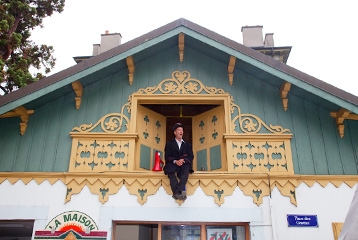Did you know? A hilly area home to watchmaking and politics, Grottes Saint-Gervais is a multi-faceted district.
The heart of the Genevan watchmaking industry
Until 1859, the population of the quarters of les Grottes and Saint-Gervais primarily consisted of master watchmakers. Their workshops multiplied in the district, enhancing the city’s reputation abroad. These craftsmen worked for a company. They might be specialists in jewellery, engraving or watchmaking…
However, the district of Grottes Saint-Gervais was also home to other crafts and industries. The area was also renowned for its soap and candle production. The Rue de l’Industrie bears witness to this industrial past.
Chalets at the heart of the city
In the second half of the 19th century, the fashion for “Swiss chalets” was all the rage in the district. Until 1914, the cut wooden façades and doors decorated with little hearts spread like wildfire through the area. The Maison Verte on the Place des Grottes is the last remaining trace of this long-gone era. It houses the Association des amis des Grottes.
A politically-active district
Throughout their history, the inhabitants of the Grottes and Saint-Gervais quarters often opposed the city’s aristocracy. After the meeting of the “First International” in Geneva in 1867, they created producer and consumer cooperatives. One of the first cooperative grocery stores opened its doors. The communist-anarchist paper, “Le Révolté” was founded in the district in 1879. It was published at 24, rue des Grottes until it relocated to Paris in 1885.
This rebellious past was reignited a hundred years later in 1975. Threatened with demolition, the district rallied to the call. The numerous abandoned apartments were occupied. A community life began to develop: crèche, collective workshops, music house, popular canteen, markets… Inhabitants, occupants and sympathisers fought to save les Grottes. In 1978, the destruction projects were abandoned in favour of renovations.
Cornavin station – a private affair
Cornavin railway station was inaugurated in March 1858. The festivities lasted three days with flags, processions, music, fireworks, carousels, speeches… Initially private, the station as destroyed by fire in 1909 before being restored and bought in 1912 by CFF. It was rebuilt between 1927 and 1933, taking on the appearance we know today.
Who are the “bras-pendants”?
People with no fixed abode were formerly known as “bras-pendants”. They mainly lived in Montbrillant and les Cropettes. Close to the station, they could earn a pittance carrying parcels.
Article modifié le 16.02.2021 à 14:25

